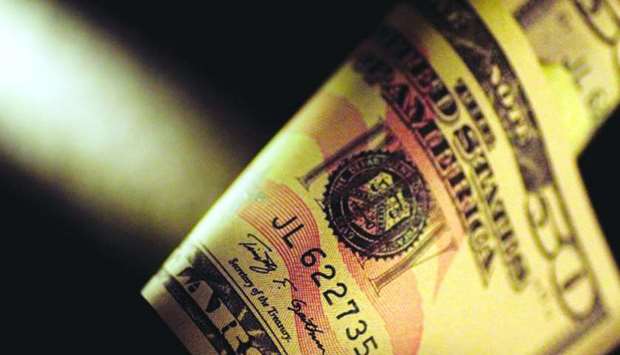Currency pegs to the dollar will remain in place in Qatar and four other Gulf Co-operation Council (GCC) countries over the coming decade, BMI Research has said in a report.
With hydrocarbon still accounting for an overwhelming majority of exports, de-pegging would carry limited benefits in terms of boosting external competitiveness, the Fitch Group company said Monday.
“At the same time, de-pegging would have severe repercussions on investor sentiment towards the region, likely triggering sharp capital outflows,” BMI said.
This, in turn, would result in depreciatory pressures, raising the costs of much-needed imported goods and fuel popular discontent.
“Not only do we see little appetite to substantially amend the current exchange rate regimes in the GCC, but we also believe that governments will be able to defend their respective pegs, especially as recovering oil prices have a positive impact on the bloc’s external and fiscal position.”
According to BMI, central banks across the bloc will continue to actively support dollar pegs over the coming decade. With the exception of Kuwait, whose currency is pegged to a currency basket in which the dollar plays an overwhelming role, all other GCC economies have had their currencies pegged to the dollar for several decades, given their long-standing reliance on oil for exports and fiscal revenues.
Hydrocarbons account for more than half of total exports (up to 89.9%) in all GCC countries, except for the UAE.
Given that oil prices are fixed internationally and denominated in dollar terms, greater exchange rate flexibility would not materially benefit exports.
Even in markets where oil represents a smaller share of exports, such as the UAE, export competitiveness would not necessarily be a boon with re-exports tending to represent a major share of exports.
With further gains in reserves expected, BMI noted this will continue to support central banks’ ability to defend their pegs.
BMI said it remains optimistic over GCC central banks’ ability to defend their respective pegs to the dollar.
The fall in oil prices in summer 2014 has taken its toll on levels of foreign reserves across the bloc given their need to finance twin deficits.
This, in turn, fuelled uncertainty toward governments’ ability to protect their currency pegs, as illustrated by the spike in forward rates across the region seen in early 2016, when oil prices bottomed.
That said, most economies continue to boast substantial financial buffers, in the form of foreign reserves and/or assets at sovereign wealth funds.
“Thanks to the ongoing recovery in oil prices, which we expect to be maintained over the coming years, current account balances returned to surplus in 2017 in Kuwait, Saudi Arabia and Qatar.
“Coupled with an increased use of international financial markets for deficit financing, this has enabled foreign reserves to begin to recover in several countries, relieving pressures on the pegs,” BMI said.



